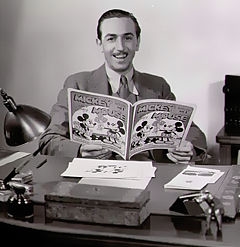The recent expiration of certain copyrights related to the original Mickey Mouse has opened up exciting possibilities for educators and language learners alike. While Disney still retains extensive rights to the character, the public domain status of early Mickey Mouse images and stories creates a unique opportunity to incorporate this beloved icon into educational materials, particularly in the realm of English as a Second Language (ESL) instruction.
The Appeal of Mickey Mouse in Language Learning
Mickey Mouse holds a special place in the hearts of people worldwide. His cheerful demeanor, relatable adventures, and timeless appeal make him an ideal figure to engage learners of all ages. By leveraging the character’s popularity, educators can create a more immersive and enjoyable language learning experience, particularly for young learners.
Potential Applications in ESL Teaching
- Vocabulary and Grammar: Mickey Mouse’s simple stories and dialogues offer a wealth of opportunities to introduce and reinforce essential vocabulary and grammar structures. Teachers can use images, videos, and interactive activities featuring Mickey Mouse to make language learning fun and engaging.
- Listening and Speaking: Mickey Mouse cartoons and audio recordings can serve as excellent listening comprehension resources. Students can practice their listening skills and then engage in role-plays or discussions based on the content.
- Reading and Writing: Teachers can create reading materials or writing prompts based on Mickey Mouse stories, encouraging students to express their understanding and creativity in English.
- Cultural Awareness: Mickey Mouse is a symbol of American culture. Incorporating the character into ESL lessons can help students develop a deeper understanding of American values, traditions, and history.
Considerations for Ethical and Effective Use
While the use of Mickey Mouse in educational materials is now more accessible, it’s important to be mindful of ethical considerations. Educators should use public domain images and stories responsibly, ensuring they do not infringe on Disney’s remaining copyrights. It’s also crucial to select age-appropriate materials and tailor activities to the specific needs and learning styles of the students.
Conclusion
The recent expiration of certain copyrights related to the original Mickey Mouse opens a new chapter in the character’s legacy, one that extends beyond entertainment and into the realm of education.



